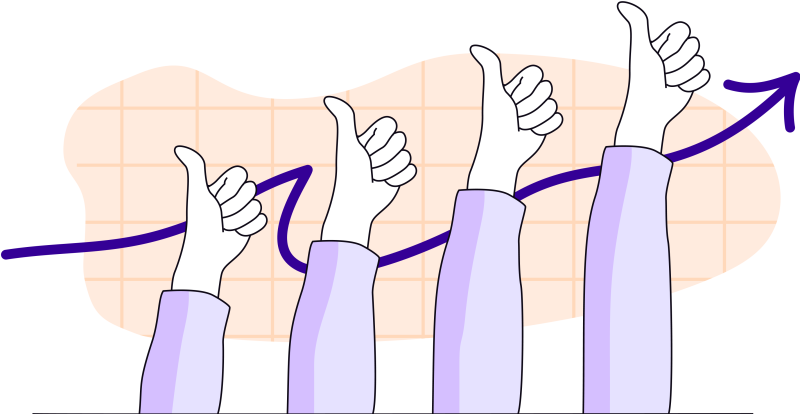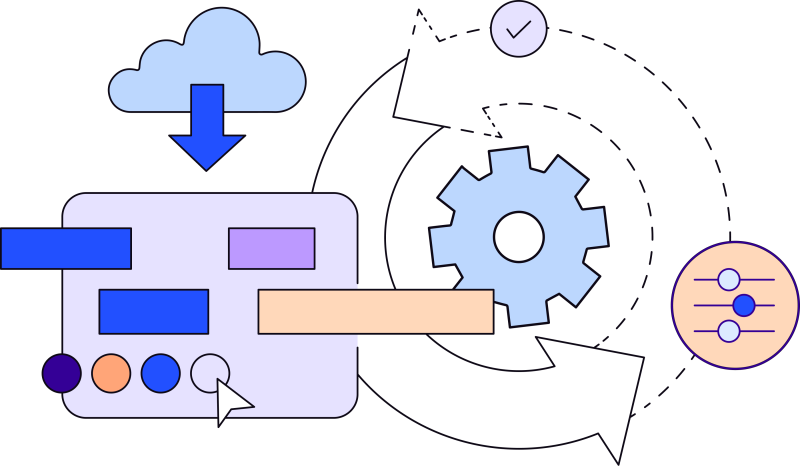Sprinting isn’t just for Usain Bolt or catching your dog after she’s dug under the fence.
Specifically, design sprints are what allow your product — and your team — to run at peak performance.
Crafting a user-friendly, buzzworthy, and valuable digital product is challenging for any design team. There’s always the risk of mistakes, distractions, and miscommunication that can alter the quality of your product (or any new features) being shipped.
More than anything, for your digital product to be competitive in the marketplace, you need to be able to ship quality features fast. This means developing a focused, nimble team that is all on the same page, seamlessly working together. With their heads down and priorities aligned, that’s where the magic happens.
All you need is two weeks.
4 Reasons Your Product Design Team Needs to Work in Sprints
Have you ever tried to get through a project without well-thought-out objectives and priorities? What’s the point?
It’s frustrating to work without clear instructions and miscommunication gets the best of everyone. Project timelines get thrown off and design debt snowballs. You know the kind. The game-changing enhancement features your product really needs are pushed to the side to make room for triaging the last-minute emergencies.
It’s a rough cycle. But it can get broken, thanks to sprinting.
Design sprints are all about planning and prioritizing, streamlining communication, and enhancing collaboration. It’s every product owner’s dream.
Here’s what to know: Each sprint cycle is two weeks. Ten business days are the sweet spot of just enough planning, but not too much where you start to notice diminishing returns. There are checkpoints to review the status of tasks. Everyone on the team meets to make sure any issues are found so they can be addressed, pronto.
Breaking important tasks and projects into manageable, two-week sprints, makes it easier for teams to be aligned. Everyone gets on the same page, puts their heads together (and down), and gets to work.
Here are four reasons you’ll love working in design sprints when working on your digital product.

Short iterations, fast improvement Those 10 business days provide just enough time and focus to complete top-priority items while allowing a beat to revisit other items (we call that a sprint-retro). When you’re focused on a task, the output quality tends to be a lot higher. The two-week sprints allow you to get more feedback from users and stakeholders, and fast. Rather than waiting months to ship a new feature, you can get something in front of users a lot quicker. You can ship a prototype for user feedback or actually ship live features when you’re ready. Faster quality improvements to your existing users mean more retention. Quality features mean more users downloading your product. You can see where we’re going here.

Happier, hardworking teams Everyone gets along better when collaboration is smooth. When everyone involved in the process is in alignment with the priorities, it makes working together a dream. Implementing design sprints with your team gives way to less confusion, which in turn improves communication and collaboration. Team members get clear instructions on focus items and feel more comfortable knowing what to expect. Plus, when team members see tangible tasks completed, they feel more accomplished. Who doesn’t like a guaranteed morale boost?

Distractions get ditched When all stakeholders are focused on one or two priorities at a time (instead of juggling several), your team is less likely to get derailed by other things like newly requested features or bugs. This may not seem like a big deal, but it is. The minute you steer away from a sprint, design debt creeps in. Those features you wanted to roll out have to get pushed to the side and ultimately, your users suffer. Design sprints act like your meditation guide: reminding you to allow and calmly acknowledge incoming tasks, but to set them down until at least the next sprint. The design sprint is a protected pocket of time for your biggest priorities. Breathe in, breathe out.

Support for your design system Sprints make everything on your to-do list manageable, and this includes the crucial routine updates your design system needs. Perhaps the only drawback to creating a design system is the time it takes to create it and keep it updated. Until your design system is around for a while, some components and design elements are hard to nail down because they can shift at the whim of your business objectives (which is totally normal). The important thing is that you treat your design system as the living, breathing document it is — updating your library so that the components and elements reflect your business objectives. Thanks to your design sprint, you’ll have time to nurture your design system. Just like your desk succulent.
Design sprints allow you and your team to constantly gain new insights
into the effectiveness of your product’s features, thanks to fast user feedback. It turns out dedicating time to actually focus on dedicated projects will do that for you. Plus, there’s concentrated time to gain perspective, re-evaluate, and reflect. All of this laser focus adds up to smarter features that your users will love.
For a surefire way to ship quality products faster, support and align your team, and compete in the fast-paced industry of start-up and fintech digital products, design sprints are the way to go. Training like Usain Bolt probably wouldn’t hurt either.









